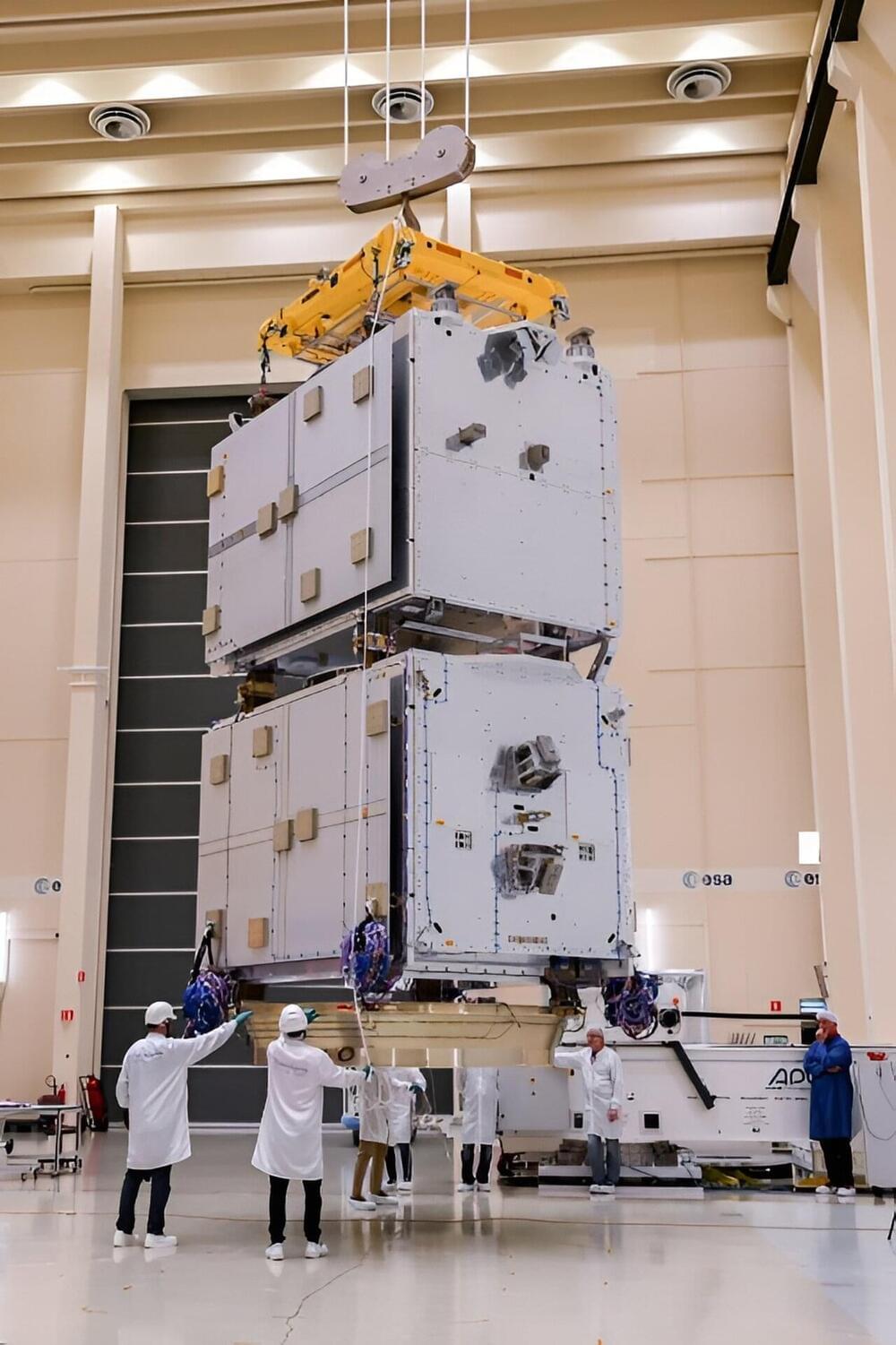The new Galileo satellite model from Thales Alenia Space underwent mechanical and signal performance testing this summer at ESA’s ESTEC Test Center. Structural models resisted launch-like noise and vibrations while an electrical model proved its ability to send Galileo signals—a major milestone in the development of Galileo’s Second Generation.
Europe’s Galileo is the world’s most precise satellite navigation system, providing meter-level accuracy to more than 4 billion users worldwide. It currently comprises 28 satellites in orbit and 10 more are due to be launched, after which a new generation of satellites, the Galileo Second Generation or G2, will revolutionize the fleet with enhanced capabilities.
“G2 satellites will be much larger than those of the First Generation, use electric propulsion, host a more powerful navigation antenna, carry more and even better atomic clocks on board and have fully digital payloads,” explains ESA’s Galileo Second Generation Project Manager Miguel Manteiga Bautista. “The modular architecture will offer a high degree of flexibility to accommodate more equipment and inter-satellite links will be enabled,” he adds.










Comments are closed.